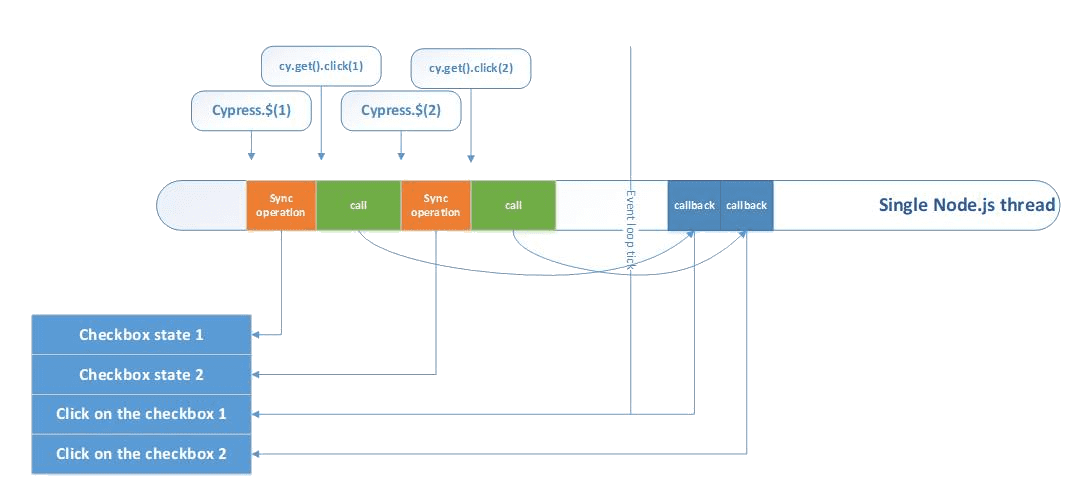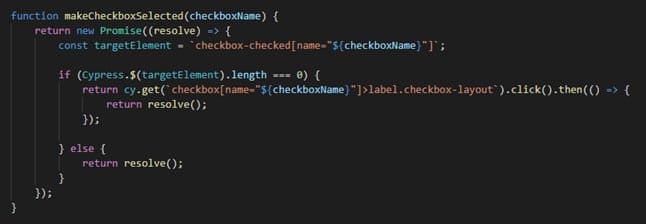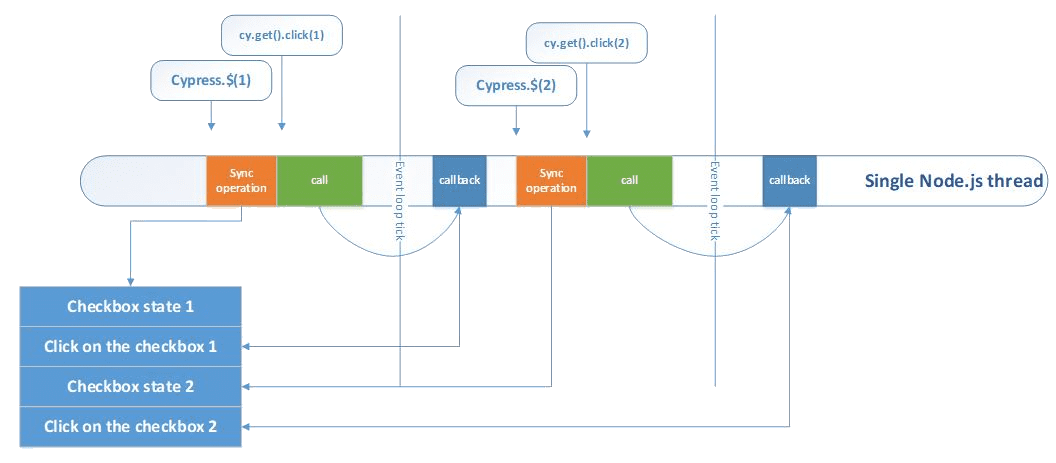
USA
Thank you for reaching out to Sigma Software!
Please fill the form below. Our team will contact you shortly.
Sigma Software has offices in multiple locations in Europe, Northern America, Asia, and Latin America.

USA

Sweden

Germany

Canada

Israel

Singapore

UAE

Australia

Austria

Ukraine

Poland

Argentina

Brazil

Bulgaria

Colombia

Czech Republic

Hungary

Mexico

Portugal

Romania

Uzbekistan
Many of us, who work (or worked) with JavaScript (JS) tool stack, could have faced some strange behavior during tests automation. We even could spend hours and hours debugging the problem and figuring out what is wrong with our code. Basing on the experience, the most common reason of those troubles is the lack of knowledge of the JavaScript basics.
Despite the fact that JS seems to be easy to work with, there is a couple of very tricky places, you should know about before you start using it. One of the most important things is asynchronicity.
This article briefly describes what asynchronicity in JS is and how to handle it.
Normally, a given program’s code runs straight along with only one thing happening at once. If a function relies on the result of another function, it has to wait for the other function to finish and return. Until that happens, the entire program is blocked.
Modern software design revolves around using asynchronous programming, to allow programs to do more than one thing at a time. This is the basis of asynchronous programming.
Let us dive into details – what is the problem here? Why do many of us face strange behavior of our code?
JavaScript has both synchronous and asynchronous operations. Examples of synchronous operations are console outputs, math operations, data operations, type conversions, and others. An example of asynchronous operations could be HTTP requests, DB requests, timeout functions, and others. It begs the question, how they work together in conditions of a single JS thread?
In figure 1 below, we see that the thread is monopolized by the first request, and Node.js engine is not able to serve the second request until the synchronous operation finishes.

Fig. 1 Single JS thread
Despite the fact that JS is based on the hypothesis that synchronous operations are always short, and most of the operations are asynchronous, we should know how synchronous and asynchronous operations work together.
Let us look at a real example, which illustrates the problem that a Test Automation Engineer can face if he or she does not know how asynchronicity works. This example is implemented on Cypress.io/JS.

The method above checks if the checkbox has the attribute “checked.” If it does not – Cypress makes it selected. However, the method does not work as expected in case you need to call it twice. Why does it happen?
As you know, Cypress.io declares that it handles asynchronicity by itself, so you do not need to additionally use any async/await or Promises. Nevertheless, Cypress has both synchronous and asynchronous operations, and you cannot differentiate them in the code – they look quite similar.
In the example above Cypress.$(targetElement).length is synchronous, and cy.get(`checkbox[name=”${checkboxName}”]>label.checkbox-layout`).click()– is an asynchronous operation according to the official documentation. Basing on the way how asynchronicity works, Cypress checks the state of the checkbox at once, after that it sets calls of cy.get() and cy.click() to the event loop queue. And cy.get() and cy.click() functions’ callbacks will be executed on the event loop next tick (please see figure 2 below).
INFORMATION: The event loop is what allows JS to perform non-blocking operations — despite the fact that JavaScript is single-threaded — by offloading operations to the system core whenever possible.

Fig. 2 Schema of the makeCheckboxSelected() method execution
As a result, Cypress checks the checkbox state twice before clicking on it, and then – clicks on the checkbox two times.
As you can see, the lack of knowledge can spell us trouble during tests implementation, because there are many similar traps caused by asynchronicity. Let us find out the ways to handle it.
To correct the method behavior, we should make the flow wait until the checkbox is selected. Async/await cannot be used in the current case, because the Cypress methods do not return the Promise. However, an instance of Promise can be created directly in the target method:

Thus, Cypress.$(targetElement) method always returns the correct checkbox state. The thread figure was changed in the following way:

Fig. 3 Schema of the makeCheckboxSelected() method execution (with Promise)
Let us figure out what the ways of asynchronicity handling exist in JS.
There are three major ways to handle asynchronicity:
Callback is a function, passed as an argument to another function. Callback function is to be run after another function execution has finished.
For a long time, callback functions were the only way to handle async logic. Nevertheless, this approach had major problems and the biggest of them was the context loss and, consequently, very difficult error handling.
The following problems occurred during the work process:
You can find the code examples and the schema of its work above.
Promise is a special JavaScript object, which represents the eventual completion (or failure) of an asynchronous operation and its resulting value.
Promises syntax fixed biggest callback problems. Promises brought plain readable calls, more or less convenient result pass to the next promises and, what is the most important, with promises we can catch all errors with .catch() promise method.
Despite the fact, that promises made handling async logic much simpler, they still have cons like using .catch() method instead of try/catch syntax or limited context pass.
Promise methods
Promises also brought a batch of methods, that help with processing of several async tasks simultaneously. They are:
In fact, async/await syntax is a syntax sugar for the promises usage. Still, this syntax fixes most of promises problems. With async/await we have flat, sync-like code for async functions.
The only significant limitation of async/await approach is impossibility to achieve fluent interface for a class.
No matter what specific way we use to handle asynchronicity, whether we work with a tool that does it for us or we do it by ourselves. Anyway, we must know how asynchronous code works. Without this knowledge we would spend a lot of time debugging our solutions with no result.
Before using any JS tool, I recommend learning its documentation carefully to find out what methods (synchronous / asynchronous) the tool provides. This will help you understand the root cause of strange behavior, if it takes place, and resolve the problem much faster.
References
https://javascript.info/event-loop
https://javascript.info/microtask-queue
https://developer.mozilla.org/en-US/docs/Web/JavaScript/Reference/Global_Objects/Promise

Elena Ozerova is a Senior Test Automation expert and part of an automation initiative group, experienced in desktop- and web-applications automation testing using different technology stacks.
Linkedin profile

On November 27, in Lviv, Forbes AI Summit brought together entrepreneurs, technology leaders, and scientists for an honest conversation about how AI is reshapin...

The EU Data Act went live in September 2025. Its rollout across Europe has been uneven, with only a few member states having completed the national set-ups. Nev...

For years, manufacturers have been talking about the advantages of shifting to outcome-based business models. The rise of AI has made the opportunity for transf...
Would you like to view the site in German?
Switch to German